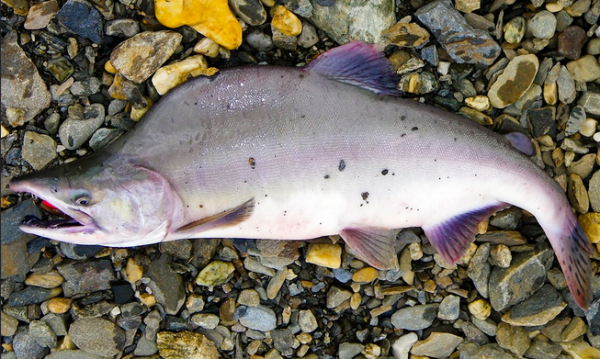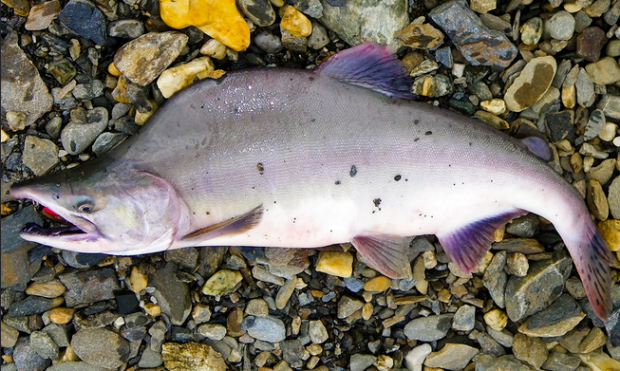By Jake Ferguson & Zach Burton for Gear Junkie
There’s a pink salmon run in Minnesota? You betcha. Here are a few fly fishing tips for locating and catching pink salmon in the rivers off of Lake Superior’s North Shore.
I was moving slowly along the bank when I saw them — I became flush with excitement. Several pink salmon were hanging in the slow current behind a log. “Zach, I found some humpies!” I called out.

Photo: Bering Land Bridge National Preserve under license
This was our first time targeting pink salmon on North Shore tributaries. We heard about the pink salmon run while fly fishing for steelhead on the same rivers earlier in the spring.
The catch rate sounded better than most, and catching a new species of fish is a blast. So we set out to get after it.
Here’s how we figured it out.
The Pink Salmon of Lake Superior
We were intent on coming back for the fall pink salmon run, so we started researching these beautiful salmon in hopes of increasing our chances to get fish on the line.
Pink salmon are normally found in the Pacific Ocean and certainly aren’t native to the Great Lakes. Lore has it that they were inadvertently introduced to the fishery near Thunder Bay in the ’50s, and they’ve been thriving since.
Most pink salmon live for only 2 years. Due to their short lifespan, they are the smallest salmon species in the Great Lakes, often weighing 1-3 pounds and measuring 12-16 inches.
They hatch in the rivers each winter. By May, most have made the journey to the big lake to feed and grow. After 2 years, they return to the river to spawn and, ultimately, die.
Lake Superior pink salmon run only once a year, and this typically happens in September. Rain triggers a spawning migration from the lake, and large numbers of salmon will push the rivers. It’s been said that the fishing is better on odd-numbered years because of their 2-year lifecycle, but there are some fish in the river every year regardless.
In the lake, they’re a light silver color, but they begin to transform as they enter the river. Their top half becomes dark-green while their sides and underbelly are splashed with pink and white. Most notably, males develop a hump behind their head that has earned them the name “humpback salmon,” or “humpies.”


